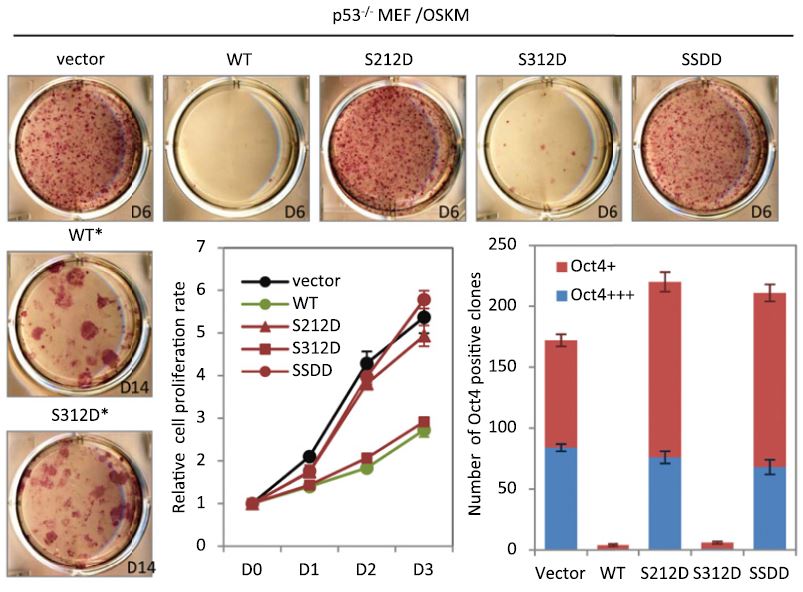Publications
Regulation of Embryonic and Induced Pluripotency by Aurora Kinase-p53 Signaling

August 3, 2012 / Volume 11, Issue 2
Cell Stem Cell
Dung-Fang Lee, Jie Su, Yen-Sin Ang, Xonia Carvajal-Vergara, Sonia Mulero-Navarro, Carlos F Pereira, Julian Gingold, Hung-Liang Wang, Ruiying Zhao, Ana Sevilla, Henia Darr, Andrew J K Williamson, Betty Chang, Xiaohong Niu, Francesca Aguilo, Elsa R Flores, Yuh-Pyng Sher, Mien-Chie Hung, Anthony D Whetton, Bruce D Gelb, Kateri A Moore, Hans-Willem Snoeck, Avi Ma'ayan, Christoph Schaniel, Ihor R Lemischka
Related Data:
Microarray DataHighlights
- shRNA screen identifies a requirement for Aurka in ESC self-renewal and pluripotency
- Aurka phosphorylates p53 and Aurka loss leads to upregulation of p53 signaling
- Phosphorylation of p53 by Aurka impairs p53-induced ESC differentiation
- Aurka modulates p53 activity in somatic cell reprogramming to induced pluripotency
Abstract
Many signals must be integrated to maintain self-renewal and pluripotency in embryonic stem cells (ESCs) and to enable induced pluripotent stem cell (iPSC) reprogramming. However, the exact molecular regulatory mechanisms remain elusive. To unravel the essential internal and external signals required for sustaining the ESC state, we conducted a short hairpin (sh) RNA screen of 104 ESC-associated phosphoregulators. Depletion of one such molecule, aurora kinase A (Aurka), resulted in compromised self-renewal and consequent differentiation. By integrating global gene expression and computational analyses, we discovered that loss of Aurka leads to up-regulated p53 activity that triggers ESC differentiation. Specifically, Aurka regulates pluripotency through phosphorylation-mediated inhibition of p53-directed ectodermal and mesodermal gene expression. Phosphorylation of p53 not only impairs p53-induced ESC differentiation but also p53-mediated suppression of iPSC reprogramming. Our studies demonstrate an essential role for Aurka-p53 signaling in the regulation of self-renewal, differentiation, and somatic cell reprogramming.